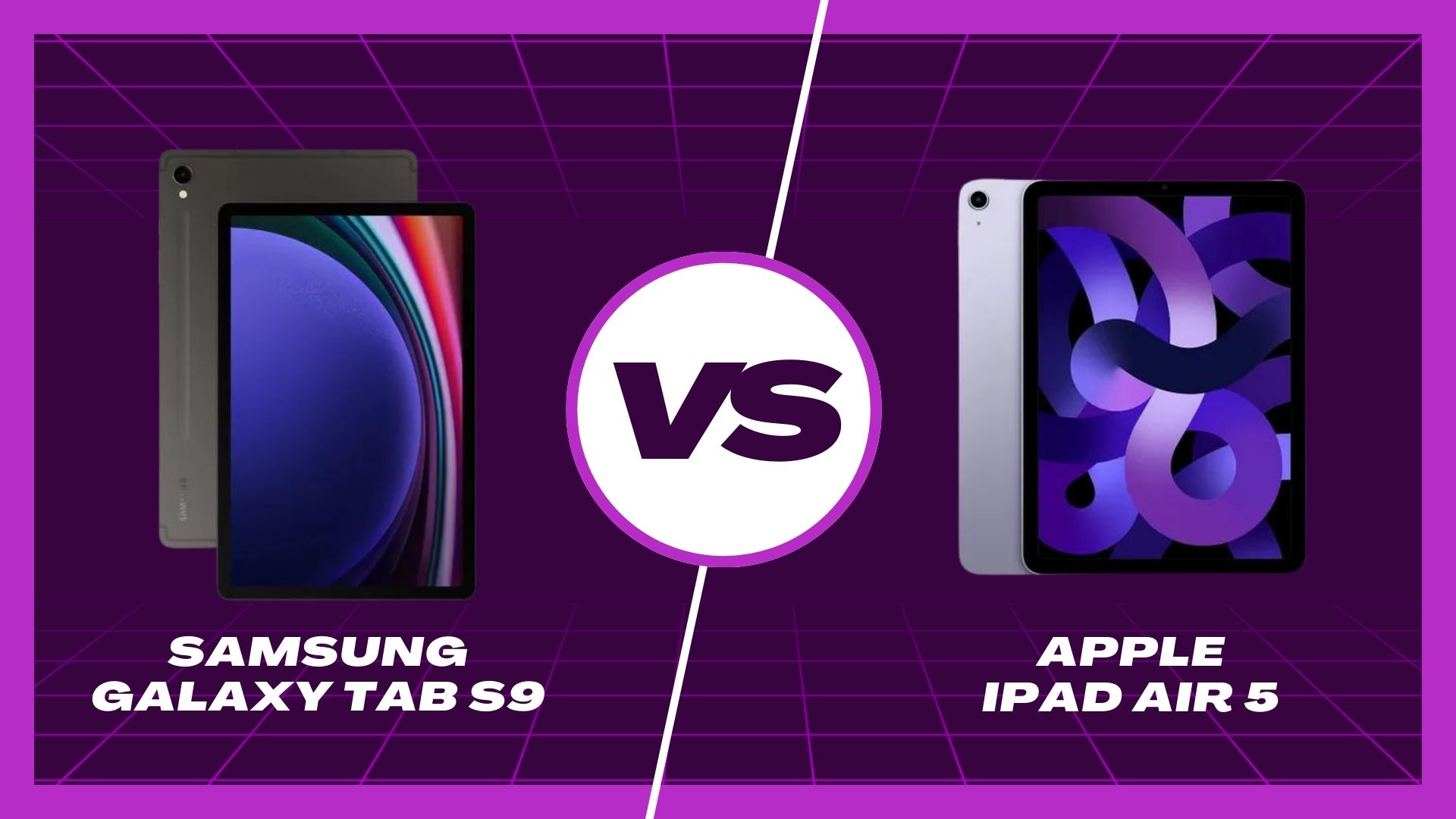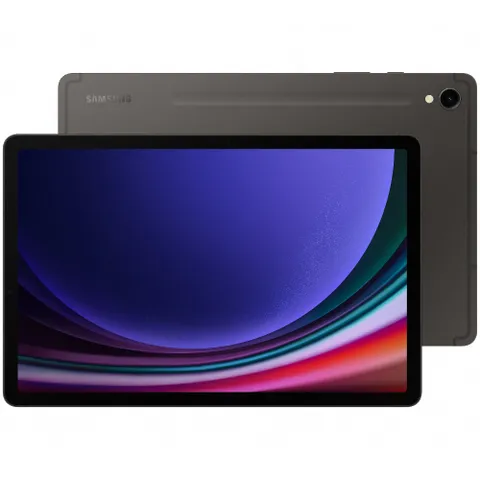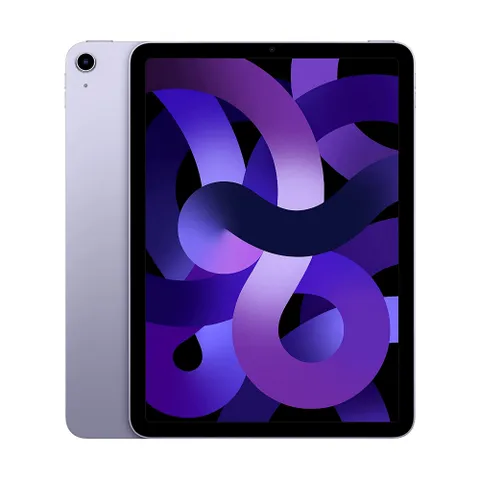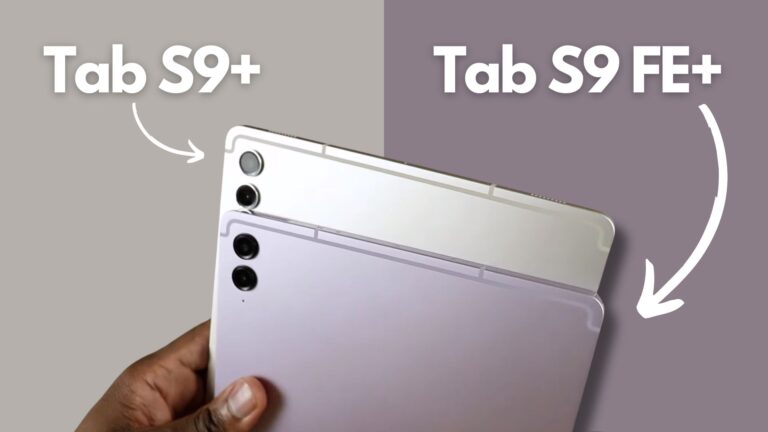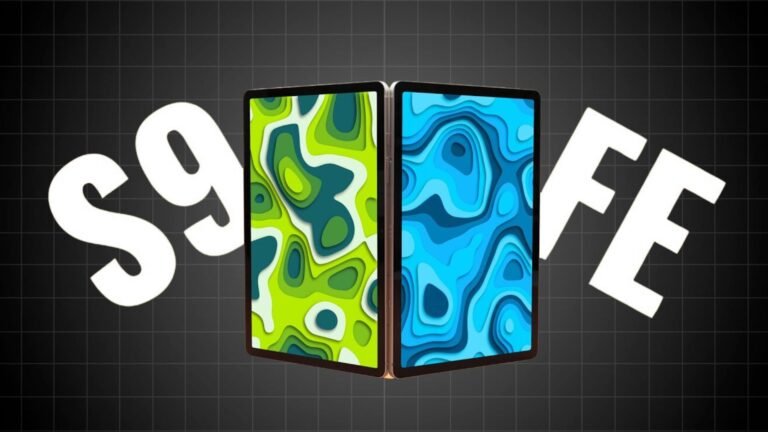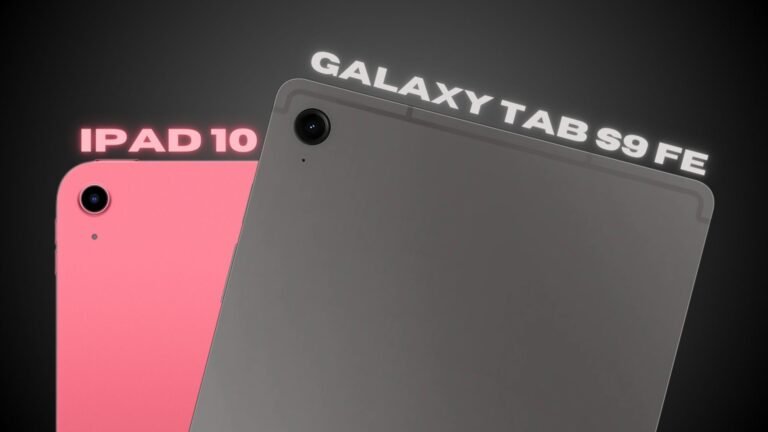As tech enthusiasts on the prowl for a top-notch mid-sized tablet, you’ll find the Samsung Galaxy Tab S9 and the fifth-generation iPad Air locked in a fierce bout for supremacy. It’s worth noting that the Tab S9 is Samsung’s freshest warrior in the arena, with Apple yet to refresh its iPad Air lineup.
Galaxy Tab S9 vs iPad Air 5: Price & Specs
The Tab S9 is available in two configurations: the initial model offers 128GB of storage and 8GB of RAM at a price of $799, while the upgraded version provides 256GB of storage with 12GB of RAM for $920.
Similarly, the iPad Air 5 is offered in two variants, both equipped with 8GB of RAM. The standard model features 64GB of storage and is priced at $599, and the higher-end model, which includes 256GB of storage, is available for $749.
| Galaxy Tab S9 | iPad Air 5 | |
|---|---|---|
| Storage | 128GB, 256GB (expandable with microSD) | 64GB, 256GB |
| CPU | Snapdragon 8 Gen 2 for Galaxy | Apple M1 |
| Memory | 8GB, 12GB | 8GB |
| Operating System | Android 13, One UI 5.1 | iPadOS 16 |
| Battery | 8,400mAh | 28.6Wh |
| Ports | USB-C | USB-C 3.1 (Gen 2) |
| Connectivity | – | Wi-Fi 6, Bluetooth 5.0, 5G (optional) |
| Dimensions | 165.8 x 254.3 x 5.9mm | 247.6 x 178.5 x 6.1mm |
| Colors | Beige, Graphite | Space Grey, Starlight, Pink, Purple, Blue |
| Weight | 498g | 461g (Wi-Fi), 462g (5G) |
| Front Camera | 12MP, f/2.4 ultrawide | 12MP, f/2.4 ultrawide |
Galaxy Tab S9 vs iPad Air 5: Display
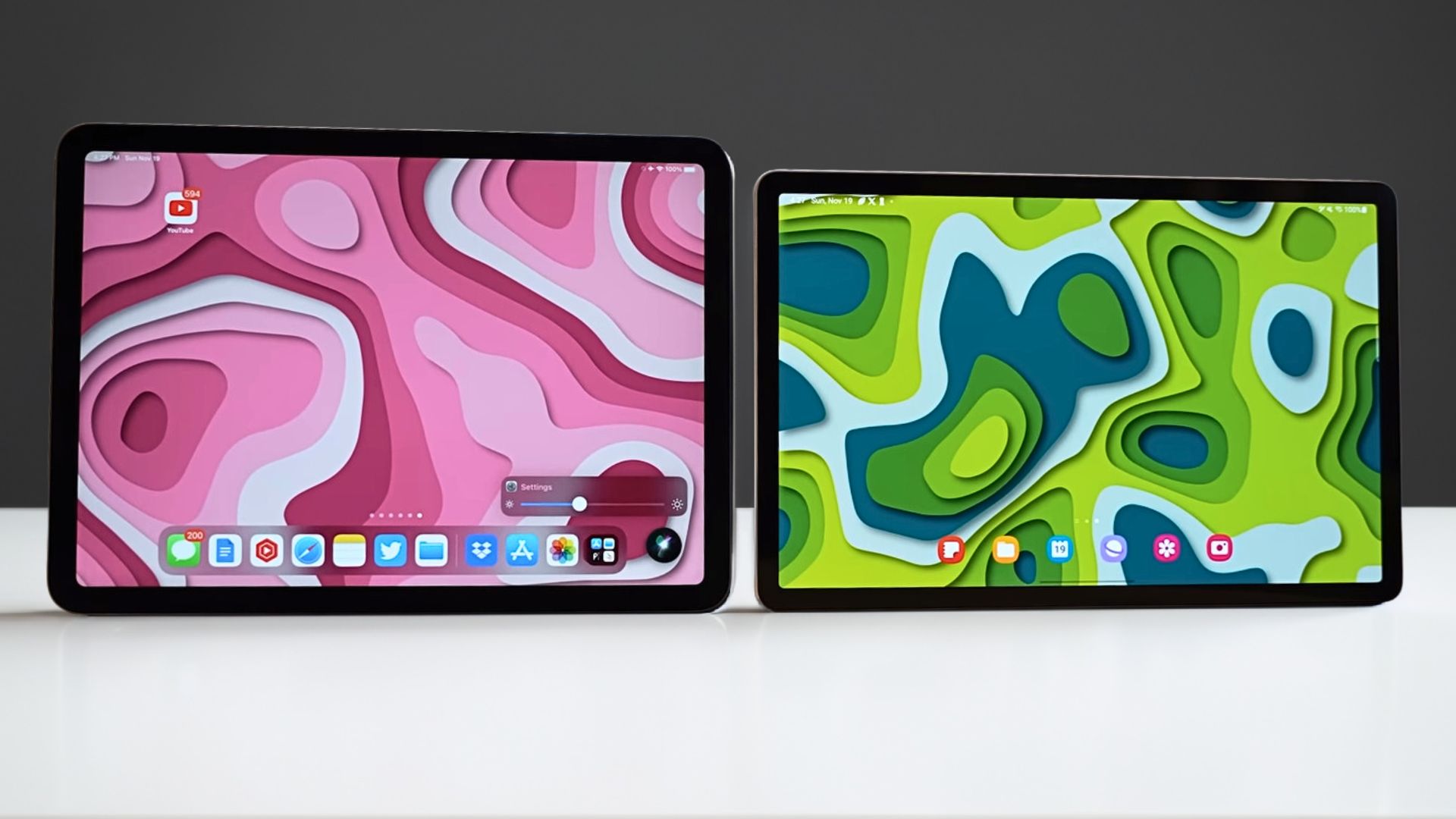
Both flaunt fully laminated displays that banish the gap between the glass and the screen, but that’s where the similarities end and the divergence begins, with each boasting its own unique display technology and aspect ratio.
The Galaxy Tab S9 sports an 11-inch dynamic AMOLED 2X display, replete with an adaptive 120Hz refresh rate for silky-smooth transitions. Its 1600×2560 resolution and 274 PPI density promise a visual feast for the eyes.
Contrastingly, the iPad Air 5 offers a marginally more modest 10.9-inch P3 display, with a standard 60Hz refresh rate, 1640×2360 resolution, and 264 PPI.
Size-wise, we’re splitting hairs with the Tab S9’s additional 0.1 inch, but its 16:10 aspect ratio does lend a more cinematic experience with minimal black bars during video playback.
The iPad Air 5, sporting a 3:2 aspect ratio, shines in portrait mode, providing a broader canvas that’s particularly conducive to artists and note-takers who prefer the Apple Pencil’s precision.
Refresh rates are another battlefield: The Tab S9’s adaptive 120Hz panel juggles the act between fluidity and battery conservation, while the iPad Air’s 60Hz screen doesn’t quite match up in terms of smoothness—though it’s by no means a slouch in delivering quality visuals across various media.
In terms of outright display quality, the crown tilts in favor of the Tab S9, but the iPad Air 5 counters with a less reflective screen, which could be the decider for those who work under the relentless gaze of the sun or bright indoor lighting.
Galaxy Tab S9 vs iPad Air 5: Design

Shifting our gaze to the design and dimensions, the Samsung Galaxy Tab S9 and the iPad Air 5 appear to be cut from the same cloth at a glance, but again, there are some important differences.
Both contenders enter the ring flaunting quadruple speaker grilles; however, the Tab S9 backs up its design with four actual speakers, delivering an auditory experience that’s both fuller and richer compared to the iPad Air 5’s duo of speakers.
Overall construction of both tablets is undeniable, with precision-machined aluminum encasing, gentle curves at the corners, squared-off edges, and svelte bezels contributing to a robust build quality that doesn’t shy away from everyday use or even the odd stress test.
Yet, the Tab S9 edges forward with its IP68 certification, ensuring it can stand its ground against the elements—be it dust or water. This feature is a godsend for the adventurous souls who venture outdoors with their tech or those simply seeking an extra shield against daily domestic hazards like spills.
Biometrically speaking, both tablets offer a nod to security but take different paths: The iPad Air 5 opts for a fingerprint sensor integrated into the power button, while the Tab S9 raises the stakes with an under-display fingerprint scanner complemented by facial recognition capabilities, adding a layer of convenience and quick access.
The universal USB-C port is the bridge for charging and peripheral connections on both tablets, yet again, the Tab S9 pulls ahead with its microSD slot. This nifty expansion bay beckons with the promise of up to an additional terabyte of storage space—not just for files, but for apps as well—cementing its position as the more versatile storage solution of the two.
Galaxy Tab S9 vs iPad Air 5: Keyboard & Stylus
Another factor to consider is the ability to expand the functionality of each tablet by adding a keyboard case and a stylus. And there’s some super important differences.
Diving into keyboard terrain, the iPad Air 5 syncs with Apple’s own Magic Keyboard, with a neat USB-C passthrough for simultaneous charging and connecting. The tactile feel of the Magic Keyboard, with its superior trackpad, is something to write home about. Meanwhile, the Tab S9 can buddy up with Samsung’s Book Cover Keyboards, or you can go rogue with a Bluetooth keyboard of your choosing for both tablets.
Apple’s Pencil for the iPad Air 5 is a sleek, wireless wonder that magnetically clings to the side for charging and pairing, priced at a premium $130. There’s also a simpler cousin, the USB-C Apple Pencil, less feature-packed but easier on the wallet at $79.
If you’re uncertain about which Apple Pencil to purchase, our buyer’s guide on Apple Pencils is a must-read for helpful insights and recommendations.
Enter the S Pen with the Tab S9, and the game changes—this stylus doesn’t demand a dime extra. It’s a free companion that wirelessly pairs and perches on the tablet’s rear for a charge. Plus, it boasts an IP68 rating for resilience against the elements.
You can assign functions to the second generation Apple Pencil double tap and the S Pen button, but the S Pen also has several Bluetooth functions, so you can use it for things like taking pictures or media playback.
The writing feels distinct with each stylus: Apple’s Pencil has a firmer tip, akin to pen on paper, while the S Pen’s softer nib mimics the cushioned give of a notepad. It’s not about which is superior, but rather which feels right in your hand, resonating with your strokes and sketches.
Galaxy Tab S9 vs iPad Air 5: Performance
In the heart of the Tab S9 beats the latest Snapdragon 8 Gen 2 chip, parceled with a choice of 8GB of RAM on the 120GB model, and a hefty 12GB for those opting for the 256GB variant.
The iPad Air 5, on the other hand, houses Apple’s M1 chip across both its 64GB and 256GB models, each coupled with 8GB of RAM.
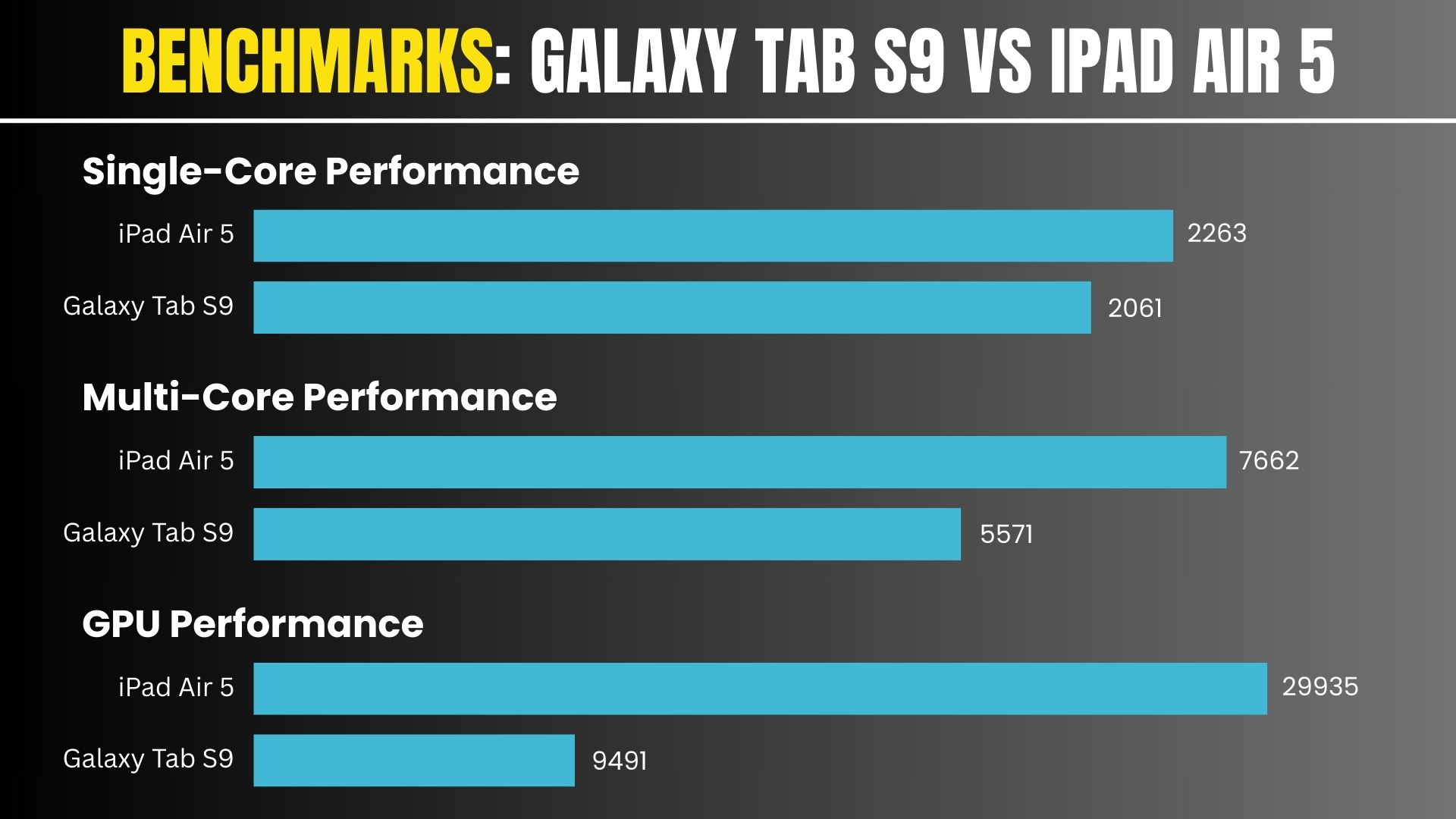
Benchmark enthusiasts will note that the M1, despite being a couple of steps behind Apple’s most recent chip offerings, still outpaces in both single and multi-core showdowns, with GPU performance also charting high scores.
But what about day-to-day use when you’re browsing the web, when you’re using various productivity apps, playing games, or multitasking?
Now the Tab S9 comes with Android 13 and One UI 5.1, which I think does an excellent job at continuing to improve multitasking and the overall user experience. For example, you can use three tiled apps at the same time and the edge panel is super versatile. The iPad Air 5 can have two apps open side by side. You can have pop-up windows and slide over windows and you can use the new multitasking menu to quickly see multiple windows within the same app.
Now both tablets can also be used as additional displays for compatible desktops and laptops. Apple calls this feature Sidecar and Samsung calls it Second Screen, but the Tab S9 has one significant advantage when you want more of a laptop or desktop-like experience with DeX.
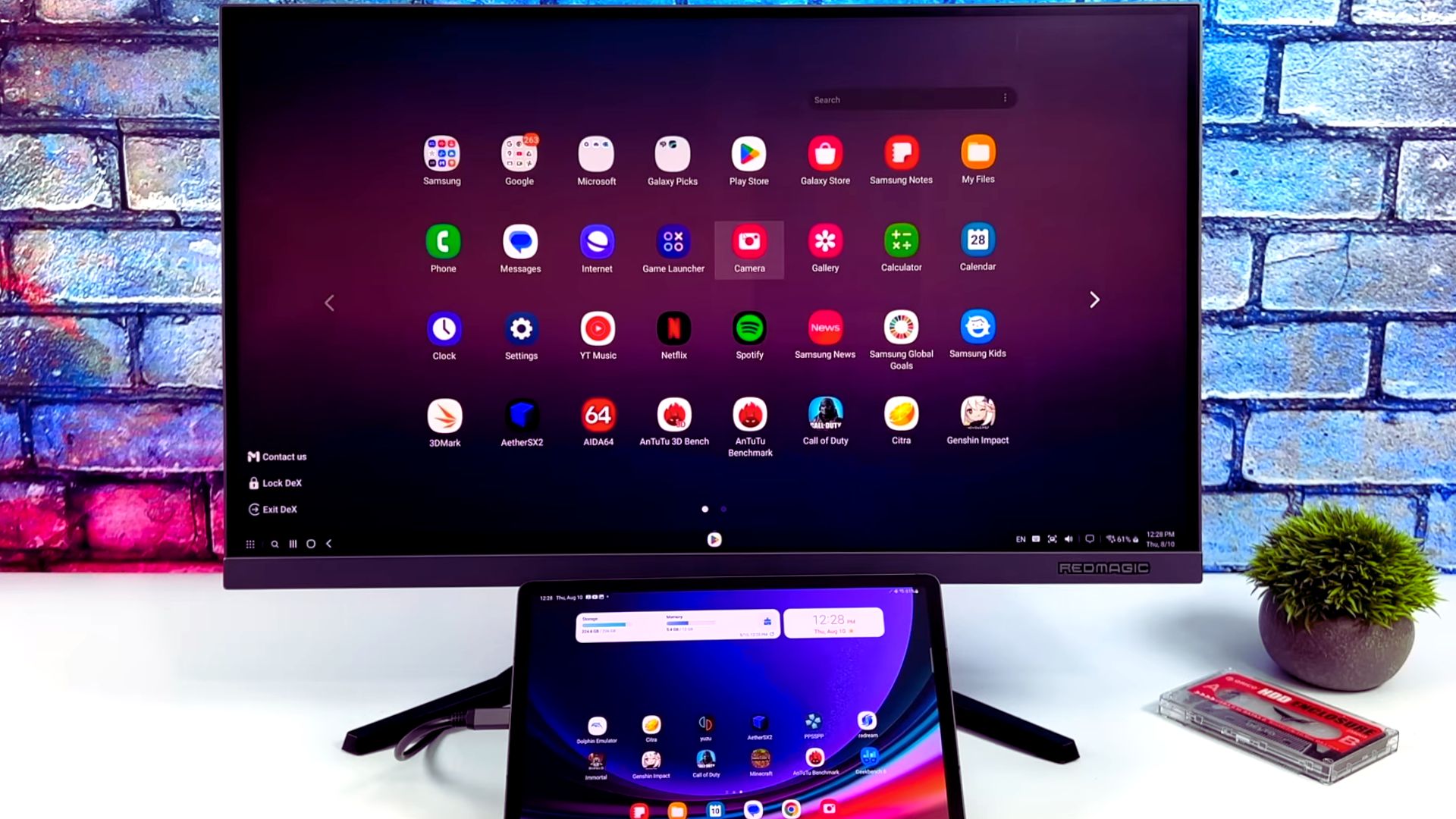
If you’re new to Samsung tablets, Dex essentially reboots the tablet with a UI that looks very similar to what you’d get on a laptop. You’ve got a task bar, a desktop with icons, and you can run multiple floating windows or snap windows to the sides of the display.
And you can connect an external monitor, keyboard and mouse, and run a dual display setup. Apple does offer Stage Manager with the iPad Air 5. You can use an external display without black bars, but overall, I’m going to give the edge to the Tab S9 and Dex.
Galaxy Tab S9 vs iPad Air 5: Apps & OS
Tipping the scales back towards Cupertino, the app ecosystem and OS updates paint a more favorable picture for the iPad Air. True, the digital shelves of the Galaxy Store, Google Play Store, and Apple App Store are abundantly stocked, ensuring that most users will strike gold in their app hunt.
Yet, for the creatives tethered to apps like Affinity Photo and Procreate, the iPad Air is the only game in town. Meanwhile, LumaFusion broadens horizons by branching out to Android, and the iPad Air swings back with the heavyweight addition of Final Cut Pro.
For the note-takers, Notability remains an iPad exclusive, but Good Notes throws Android users a bone, and Samsung Notes, bundled with the Tab S9, stands out as a stellar in-house alternative.
However, when we talk about app optimization, the iPad Air 5 boasts a formidable array of applications fine-tuned for the tablet experience, while the Tab S9 often makes do with phone apps that have simply been scaled up.
On the OS update front, Apple’s track record of providing substantial long-term support is legendary. Samsung’s promise of four years of OS updates and five years of security patches is commendable, but for those for whom update longevity is a deciding factor, the iPad Air retains a distinct advantage.
Galaxy Tab S9 vs iPad Air 5: Battery Life
Drifting into the realm of battery life, the fresh-out-the-box iPad Air 5 clocks in around 10 hours of typical use—a respectable figure that’s outstripped by the Tab S9’s stamina, boasting 12 to 14 hours on a single charge.
Yet, it’s not just about the hours; it’s what you do with them. A leisurely video stream over Wi-Fi is a mere sip of power compared to the guzzling demands of gaming or video rendering.
Charging speeds are another battleground. The Tab S9 is the more impatient of the two, supporting a brisk 45-watt input, leaving the iPad Air 5 trailing with its 30-watt capability. But there’s a catch: the iPad Air 5 includes a 20-watt charger in its box, a convenience the charger-less Tab S9 package overlooks.
Galaxy Tab S9 vs iPad Air 5: Camera
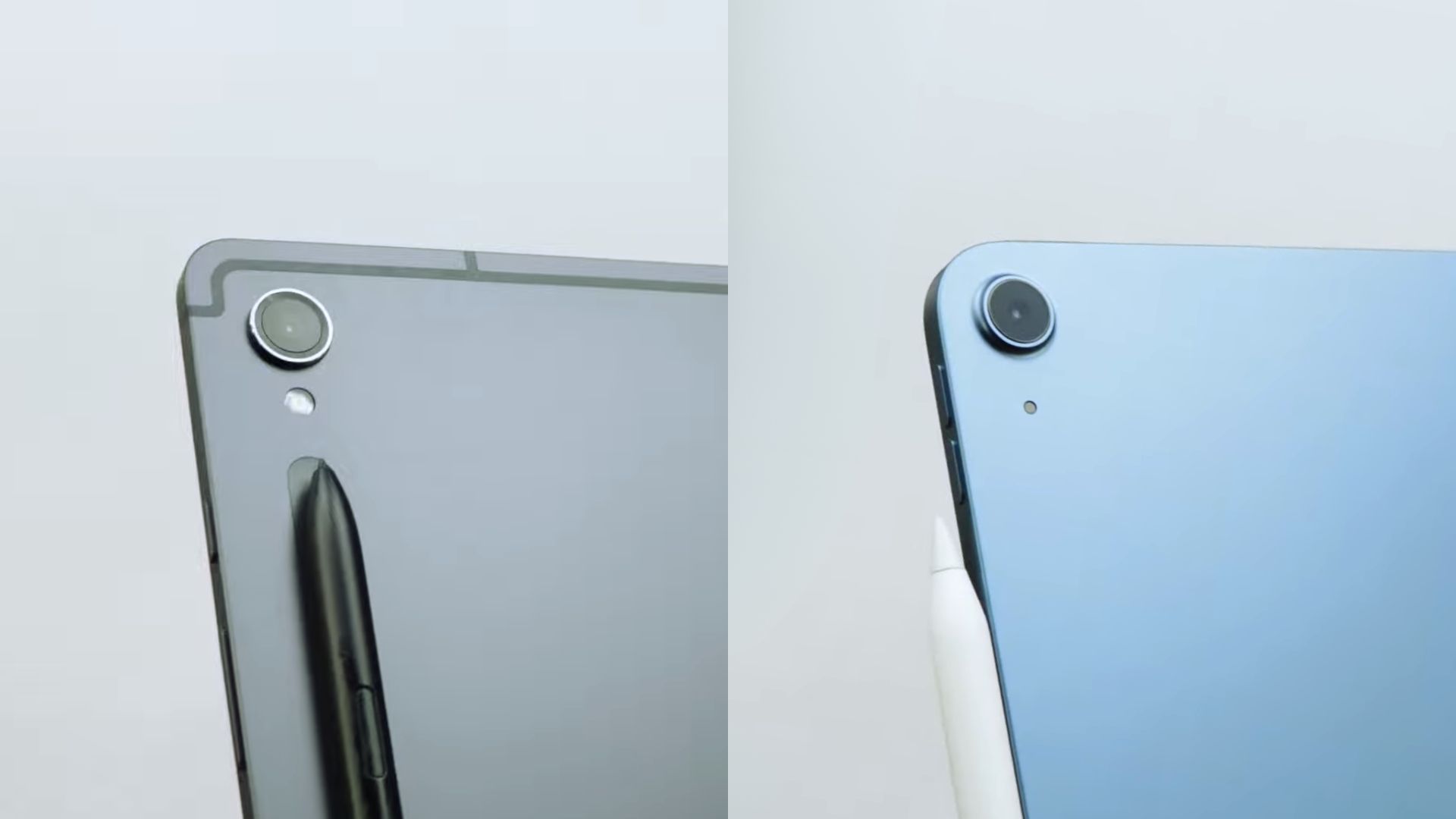
Both the iPad and the Tab S9 are equipped with ultra-wide 12-megapixel front-facing cameras. However, their recording capabilities differ. The iPad can record at a maximum of 1080p at 60 FPS, while the Tab S9 can record up to 4K at 30 FPS.
Regarding the rear-facing cameras, the Tab S9 features a 13-megapixel wide camera, compared to the 12-megapixel camera on the iPad Air. The iPad Air supports recording up to 4K at 60 FPS, surpassing the Tab S9’s 4K at 30 FPS capability. Additionally, the iPad Air offers slow-motion recording at up to 240 FPS.
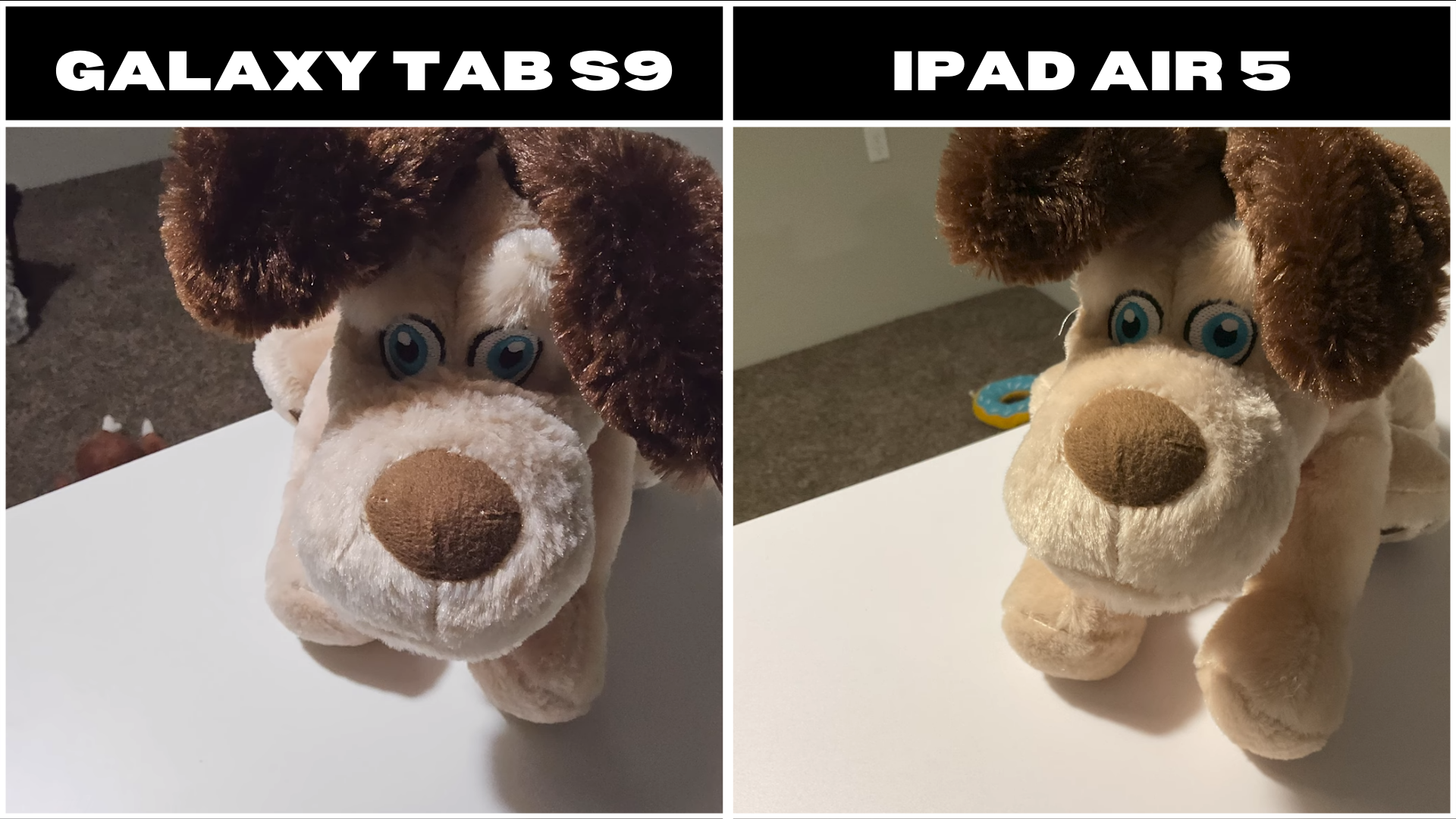
For video calls, the Tab S9’s camera placement on the center of the long edge is preferable as it ensures proper framing and gives the impression that I’m looking directly at the person I’m speaking with. In contrast, the iPad’s camera on the short side often makes it appear as if I’m looking away from the person, especially when I’m focused on the screen.
Galaxy Tab S9 vs iPad Air 5: Conclusion
Let’s start with Samsung. It’s a bit of a letdown that they haven’t reintroduced the 512GB variant seen in the Tab S7, particularly as it was omitted in the Tab S8 series. Though, this could be due to limited demand, considering the option to enhance storage with a micro-SD card.
Shifting focus to Apple, offering only 64GB in today’s context seems rather inadequate. The M1 chip is undeniably robust, destined to excel for years ahead. However, for those users seeking high performance, particularly gamers, 64GB will quickly become limiting, often necessitating the deletion of existing games to make room for new ones. It would be more beneficial if Apple continued with the 128GB and 512GB options as they did with the M1 11-inch iPad Pro, especially since these models are already in circulation.
